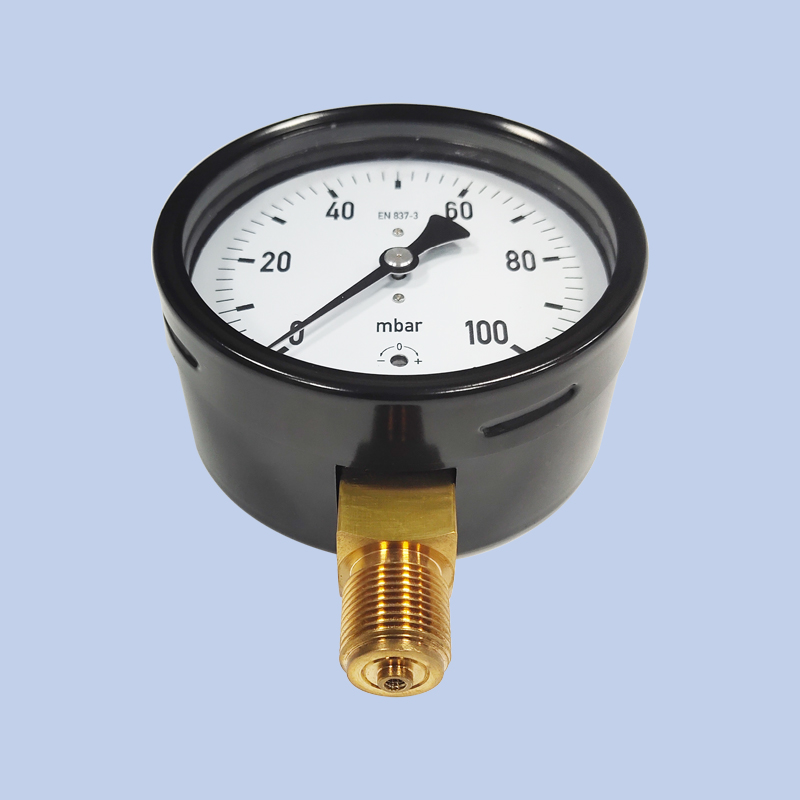
12月 . 23, 2024 08:33 Back to list
famous differential pressure gauge construction
The Construction and Principles Behind Famous Differential Pressure Gauges
Differential pressure gauges are essential instruments widely utilized across various industries, including oil and gas, water treatment, pharmaceuticals, and HVAC systems. Their primary function is to measure the difference in pressure between two points in a system, allowing for the monitoring of processes and system performance. In this article, we will explore the construction of a famous differential pressure gauge, along with its principles of operation and applications.
Understanding Differential Pressure Gauges
Differential pressure gauges measure the pressure difference between two inputs, providing valuable insights into the system’s status. These gauges can help detect blockages, monitor filtration systems, and measure fluid levels. Essentially, they can indicate changes in flow rates and levels, which are critical for efficient process control.
Key Components of Differential Pressure Gauges
The construction of a differential pressure gauge generally features several key components
1. Sensing Elements The most critical part of a differential pressure gauge is the sensing element, which detects pressure variations. Common types of sensing elements include diaphragm, capsule, and bellows.
- Diaphragm A flexible diaphragm responds to pressure changes, deforming accordingly. The degree of deformation is proportional to the pressure difference and is often translated into a readable output. - Capsule Made from two metal plates, the capsule expands or contracts in response to pressure changes, effectively measuring differential pressures. - Bellows A set of corrugated metal sections that can extend or compress under pressure, bellows are used for larger differential pressure applications.
2. Transmitter/Indicator The transmitter converts mechanical displacement caused by pressure changes into an electrical signal that can be displayed on an electronic screen or sent to a control system for monitoring. Mechanical gauges, on the other hand, display the pressure difference directly on a dial through a needle movement.
3. Elastomer Seals To prevent the ingress of contaminants and protect the internal mechanisms from fluid exposure, elastomer seals are crucial. They provide the necessary protection while ensuring accurate readings.
4. Housing The outer casing of a differential pressure gauge is typically made from durable materials to withstand harsh industrial environments. It is designed to protect internal components from mechanical damage and environmental factors.
famous differential pressure gauge construction

5. Calibration Mechanism An essential part of any gauge, the calibration mechanism allows for the adjustment of the readings to ensure accuracy. This can involve mechanical adjustments for analog gauges or software calibration for digital models.
Operating Principles
The operating principle of a differential pressure gauge can be simplified into a few steps
1. Pressure Measurement The gauge connects to two distinct pressure points within a system. These points might correspond to different sections of a pipeline, or upstream and downstream of a filter, for example.
2. Detection of Pressure Difference As pressure is applied to the sensing element, the difference in pressure causes a measurable displacement (deformation) in the sensing element.
3. Conversion and Display The mechanical displacement is either directly displayed on a dial (for mechanical gauges) or converted into an electrical signal and transmitted to a digital display or control system (for electronic gauges).
Applications of Differential Pressure Gauges
Differential pressure gauges are invaluable in various applications
- Filter Monitoring In filtration systems, these gauges indicate when filters require maintenance based on pressure changes. - Flow Measurement Engineers use them to calculate flow rates by measuring pressure drops across an orifice plate or venturi. - Level Measurement They are employed in tanks and vessels, measuring the level of liquid by assessing pressure changes due to the height of fluid.
Conclusion
Famous differential pressure gauges are critical tools in numerous industrial applications. Their construction, consisting of precision components such as sensing elements, transmitters, and durable housings, enables precise and reliable pressure measurements. Understanding their principles of operation and various applications allows industries to leverage these instruments for enhanced efficiency and safety in monitoring and controlling process dynamics. As technology evolves, differential pressure gauges will continue to play an indispensable role in industrial automation and process control.
-
High-Precision 5 Valve Manifold Differential Pressure Gauge Suppliers
NewsApr.29,2025
-
High-Precision Diaphragm Vacuum Pressure Gauges Manufacturers & Quotes
NewsApr.29,2025
-
Omega Differential Pressure Gauges High Accuracy & Durability
NewsApr.28,2025
-
Low Pressure Differential Pressure Gauges Precision Solutions & Quotes
NewsApr.28,2025
-
Digital Diaphragm Pressure Gaauge Precision Measurement & OEM Quotes
NewsApr.28,2025
-
Differential Pressure Gauge China Price High-Accuracy & Best Quotes
NewsApr.28,2025
